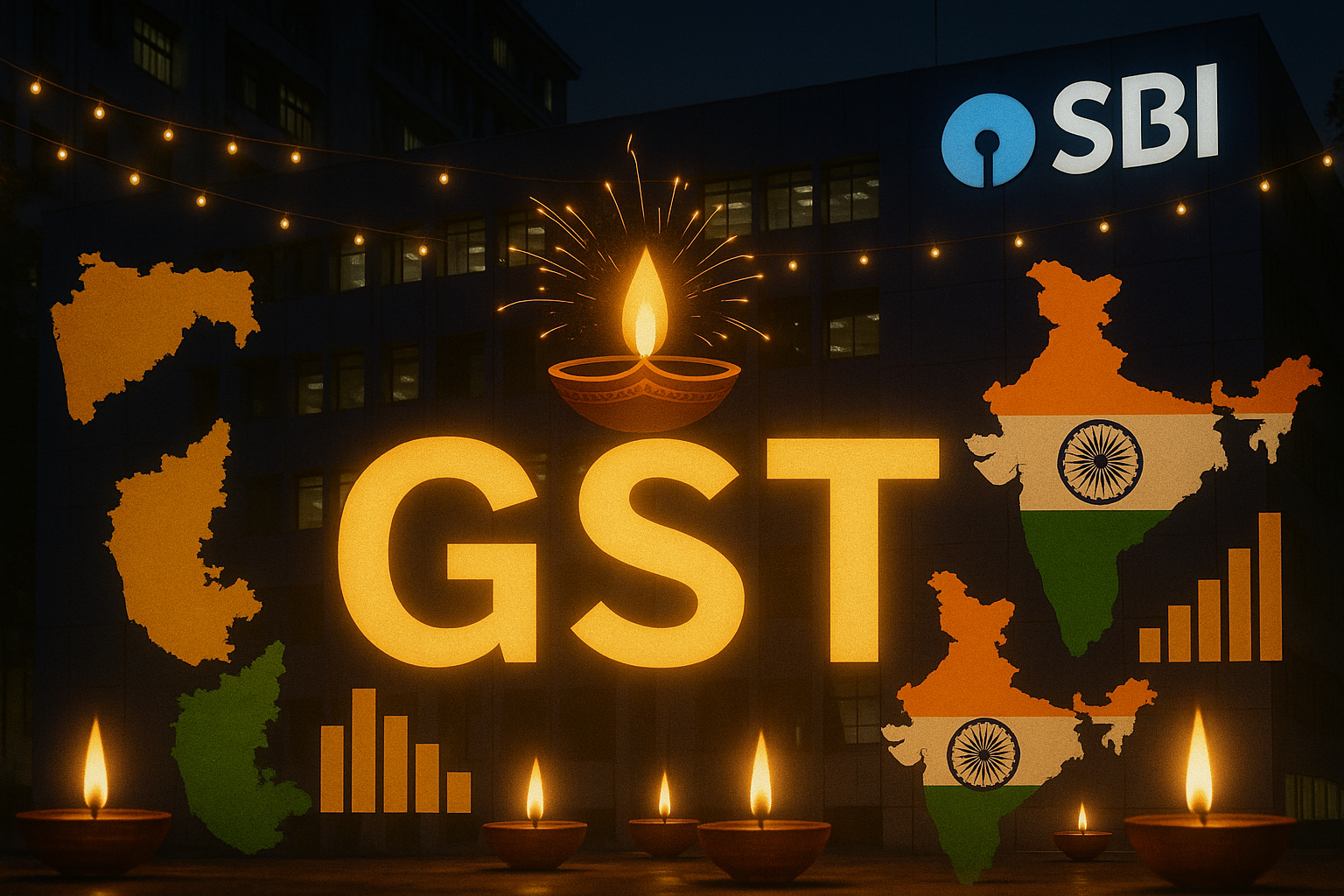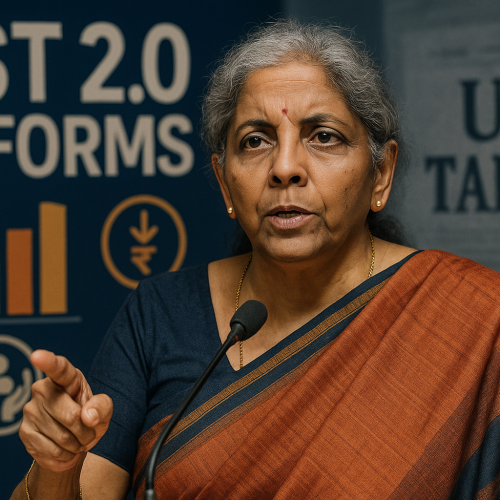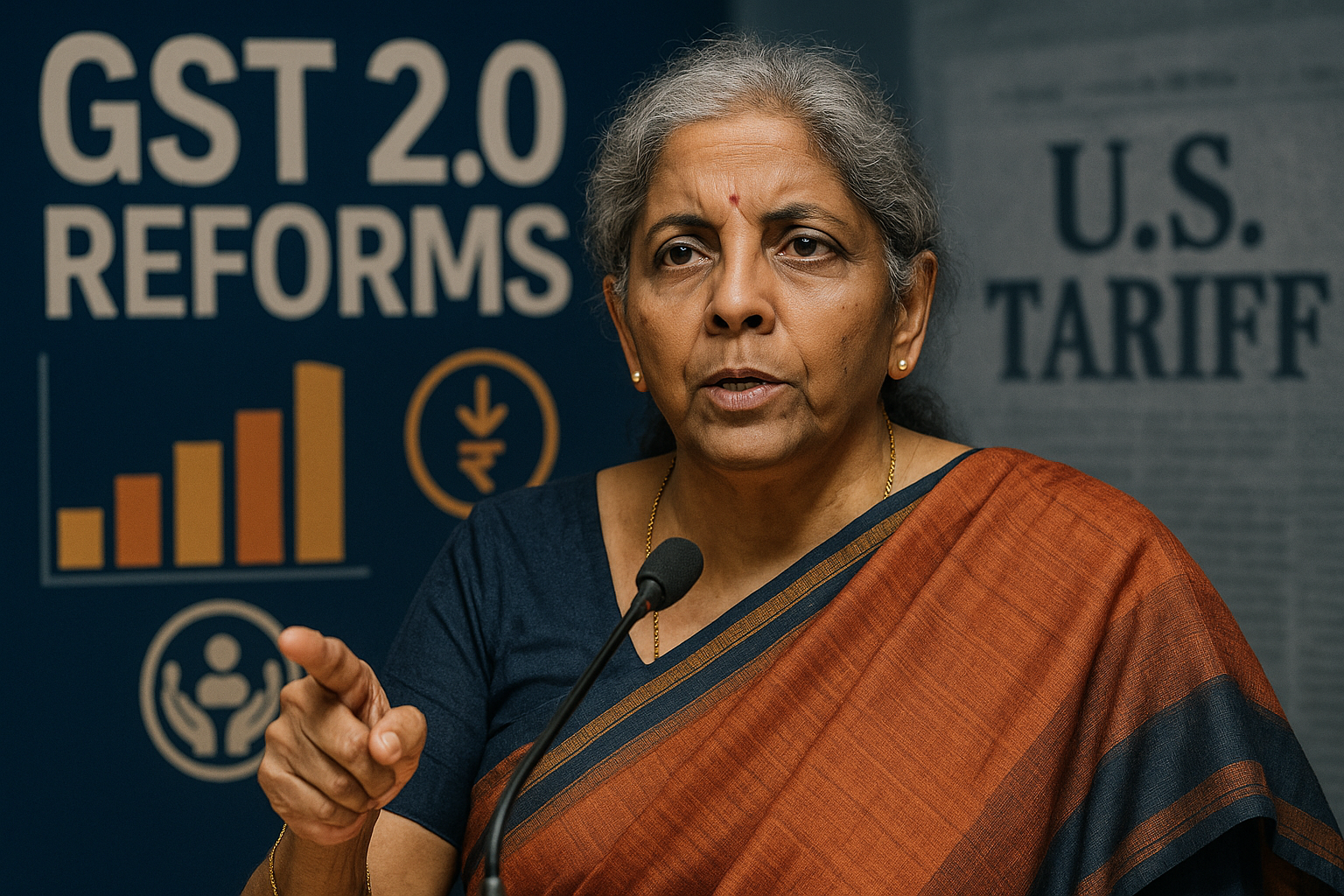State Bank of India (SBI) has reassured state governments that they need not worry about revenue losses from Prime Minister Narendra Modi’s proposed “Diwali GST gift”, which involves rate rationalization and consumer-friendly tax cuts. According to SBI, states will continue to be net beneficiaries under the current GST compensation framework.
The statement is aimed at easing fiscal anxieties, as states have raised concerns about shrinking revenues from GST reforms. SBI’s clarification underscores that reforms designed to stimulate demand will not undermine the fiscal position of states in the medium term.
Core Development
SBI’s economic research team has stated that the GST rate adjustments planned as part of the Diwali package will not disadvantage states financially. While tax cuts may reduce immediate collections, increased consumption and compliance are expected to balance the revenue equation over time.
The reassurance comes as state governments, already coping with rising welfare expenditures and uneven revenue flows, voiced fears of fiscal stress. SBI emphasized that under India’s federal tax-sharing mechanism, states will continue to enjoy robust transfers and a net gain from GST collections.
Economic and Political Context
The timing of this assurance is crucial. With national elections ahead, the central government is expected to push pro-consumer measures such as GST rationalization to boost festive demand. States, however, have been cautious, fearing that deeper rate cuts could weaken their fiscal autonomy.
By publicly addressing these concerns, SBI — the country’s largest lender — has positioned itself as a stabilizing voice, aligning with the Centre’s growth-first narrative while calming state-level fiscal worries.
Key Drivers of the Debate
The debate stems from the delicate balance between short-term revenue pressures and long-term economic benefits. Tax rationalization often sparks immediate fears of revenue loss, but higher compliance, reduced evasion, and expanded consumption typically make up for the shortfall. SBI’s analysis suggests that the Diwali package will follow this trend, leaving states in a stronger position once demand recovery gains momentum.
Stakeholder Impact
For state governments, the message is clear: GST reforms should not be seen as a threat to fiscal health but as a growth catalyst. For businesses, lower GST rates may boost sales during the festive season, especially in retail and FMCG sectors. For citizens, rationalized rates promise relief in household budgets and a more affordable festive shopping season.
Industry and Policy Reactions
Policy experts have noted that SBI’s intervention signals confidence in the fiscal math of GST reforms. Industry observers argue that a carefully designed rate cut can enhance compliance and expand the tax base. Some states, however, remain wary, citing past experiences where revenue growth lagged projections. The coming months will be key in testing SBI’s optimism against ground realities.
Challenges and Risks
The central challenge lies in execution. While GST rationalization may support demand, states will still face pressure from rising welfare commitments, subsidies, and infrastructure spending. The risk of uneven compliance across sectors remains, which could delay the projected revenue offset. Furthermore, global trade uncertainties and oil price volatility may indirectly affect consumption trends, adding complexity to revenue projections.
Strategic Outlook
If GST reforms are implemented smoothly, the Diwali package could act as both a political and economic booster. States will likely adapt to the new regime, benefitting from higher consumption-driven tax inflows in the medium term. For India as a whole, the move strengthens the case for a simpler, more efficient GST structure, supporting growth while keeping fiscal balances in check.
Why This Matters
GST has been one of the most transformative reforms in India’s fiscal history. The assurance that states will remain net gainers ensures that cooperative federalism continues to thrive, even as tax structures evolve. For businesses and citizens, the reform promises stronger demand and improved affordability. For policymakers, it demonstrates the balancing act between fiscal prudence and growth stimulation.












